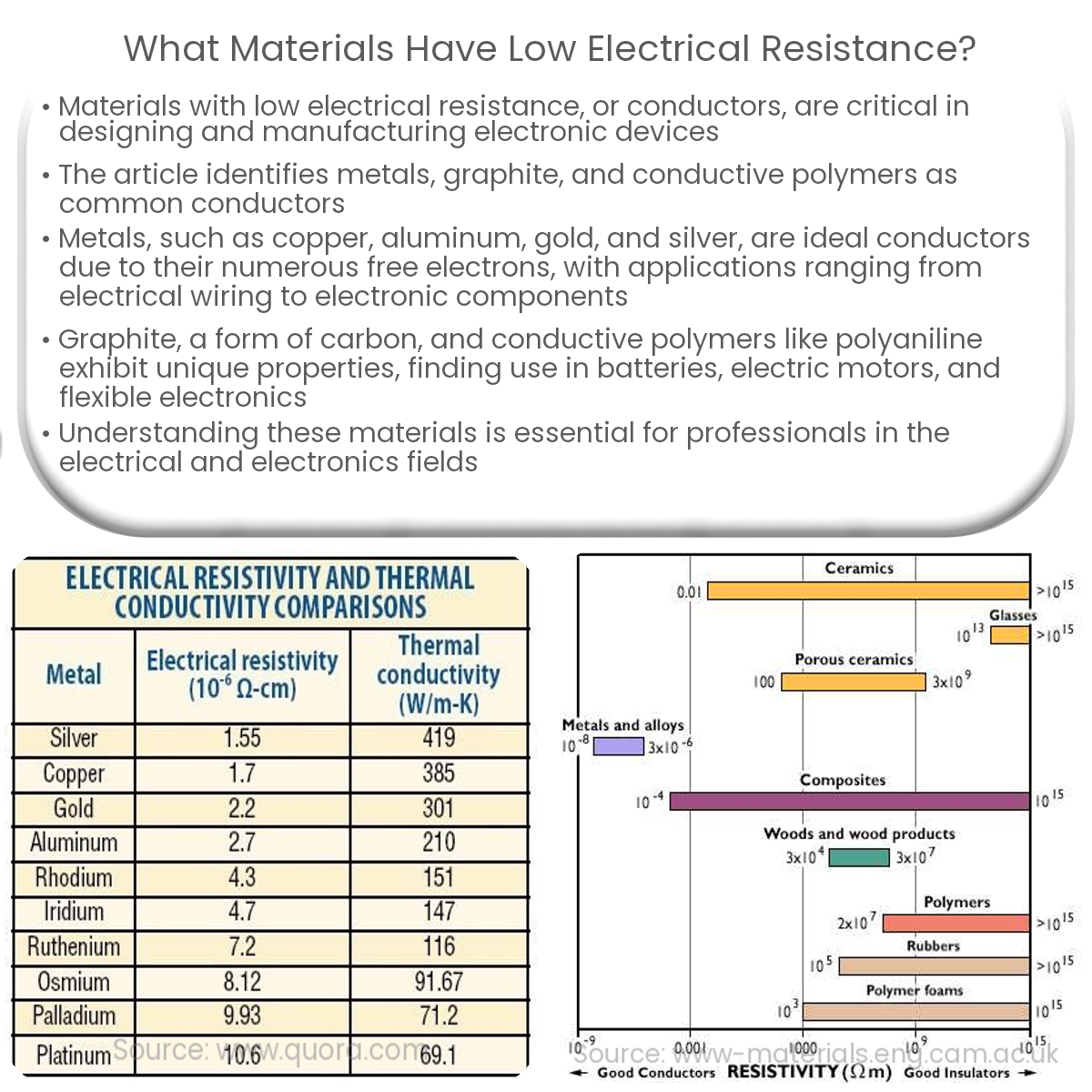Low electrical resistance materials include metals (copper, aluminum, gold, silver), graphite, and conductive polymers, used in various electrical applications.
Materials with Low Electrical Resistance
Materials with low electrical resistance, also known as conductors, allow the easy flow of electric current. These materials are essential in the design and manufacturing of electrical and electronic devices. This article discusses common materials with low electrical resistance and their applications.
Metals
Metals are the most common materials with low electrical resistance, making them ideal conductors. They have a large number of free electrons that can move easily, facilitating the flow of electric current. Some commonly used metals with low resistance include:
- Copper: Copper is one of the best electrical conductors, offering high conductivity and low resistance. It is widely used in electrical wiring, transformers, and other electrical equipment.
- Aluminum: Aluminum has a slightly higher resistance than copper but is still a good conductor. It is lightweight and less expensive, making it suitable for power transmission lines and other applications where weight and cost are concerns.
- Gold: Gold is an excellent conductor with low resistance, and it is highly resistant to corrosion. It is often used in high-quality electronic connectors, contacts, and circuit boards.
- Silver: Silver has the lowest electrical resistance of all metals, but its high cost and susceptibility to tarnishing limit its use to specialized applications, such as high-frequency conductive elements and electrical contacts.
Graphite and Carbon
Graphite, a form of carbon, has relatively low electrical resistance compared to non-metallic materials. It can be used in applications where a conductive material with specific properties is needed. For instance, graphite is used as electrodes in batteries and electrochemical processes, brushes for electric motors, and conductive layers in some electronic devices.
Conductive Polymers
Conductive polymers are a class of materials that combine the properties of both insulators and conductors. They have low electrical resistance and can be engineered to exhibit specific conductive properties. Some common conductive polymers include polyaniline, polythiophene, and polypyrrole. Applications for conductive polymers include flexible electronics, sensors, and antistatic coatings.
Conclusion
Materials with low electrical resistance, such as metals, graphite, and conductive polymers, are crucial in various electrical and electronic applications. Copper, aluminum, gold, and silver are widely used metals in electrical wiring, power transmission, and electronic components. Graphite and conductive polymers offer unique properties and are used in specific applications like batteries, electric motors, and flexible electronics. Understanding the properties and applications of low-resistance materials is vital for engineers and designers working in the electrical and electronics fields.


